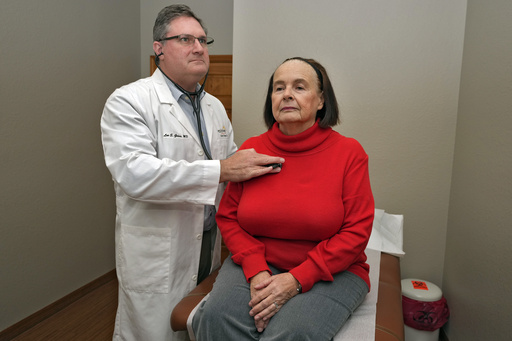
Andrea Meneses discovered a direct primary care clinic during a family health emergency. While her grandmother was visiting from Bolivia and lacking insurance, she urgently needed medical attention due to a mishap with her insulin storage. In her quest for help, Meneses reached out to friends and was referred to Dr. Wendy Molaska, who operates a direct primary care clinic in Madison. This model generally involves patients paying a monthly fee between $50 and $100 for unfettered access to their healthcare provider without additional charges.
Direct primary care is gaining traction, especially with anticipated health policy reforms from the current administration. Robert F. Kennedy Jr., the nominee for Secretary of Health and Human Services, has highlighted this healthcare model during his confirmation discussions. Gayle Brekke, a researcher specializing in health services from Kansas City, expressed her optimism about the potential for direct primary care to expand, noting that the current climate offers a significant opportunity for this model to thrive.
Many patients and healthcare providers appreciate the ease and affordability of obtaining routine medical services through direct primary care. However, public health experts urge caution against viewing this as a replacement for traditional insurance coverage, as the model typically does not cover anything but direct consultations with the physician.
Patients participating in direct primary care often report considerable savings on healthcare expenses, especially those lacking insurance who otherwise face high out-of-pocket costs. In the case of Meneses, for instance, her grandmother was directed to a local pharmacy for her insulin prescription at a reduced rate. The flexibility of direct primary care enables doctors to collaborate with laboratory and imaging facilities to offer tests and procedures at lower prices. Furthermore, many doctors in this field can dispense medications directly or work closely with pharmacists to help patients obtain them affordably.
Dr. Molaska’s fee ranges from $70 to $85 for individuals, with a maximum of $200 for families. Serving a diverse community with bilingual capabilities, she has garnered a waiting list of 125 individuals desiring her services. After experiencing the success of this model, the entire Meneses family became her patients, benefiting from reduced medication costs and streamlined appointment scheduling.
In this system, physicians can devote more time to each patient, alleviating the stress often associated with dealing with insurance companies. Meneses, who primarily serves a Hispanic clientele as an accountant, expressed a desire for more people to learn about direct primary care, despite some skepticism regarding its legitimacy among those unfamiliar with it.
Nevertheless, critics contend that direct primary care addresses only a niche demographic—typically healthier individuals who either cannot afford insurance or do not qualify for government programs like Medicaid or Medicare, as well as those residing in areas short on community health resources. These detractors emphasize the danger of overstating the affordability of this model.
Dr. Stephanie Woolhandler, a primary care physician and researcher, highlighted the struggles many patients face in affording even minimal healthcare costs, sometimes finding it hard to manage transportation or small co-payments. While some may find direct primary care beneficial, Dr. Kevin Schulman from Stanford pointed out its limitations, as it does not replace health insurance and can only cover what can be offered during office visits.
Dr. James Vanderloo, practicing in Mississippi—one of the poorest states in the country—confirms that direct primary care provides valuable support for managing ongoing health concerns like diabetes and hypertension. He noted, however, that for severe conditions requiring surgery, patients would still need to access emergency care.
Dr. Lee Gross, a pioneer in direct primary care since 2010 in Florida, made the transition to this model to eliminate the frustrations caused by navigating the insurance landscape. Longtime patient Annie Geisel appreciates the prompt service and lack of co-pays she experiences since the clinic’s change to direct primary care, contrasting her experience with friends who contend with insurance delays.
The growing dissatisfaction with traditional health insurance systems might lead to an increased appeal for direct primary care. A policy design called Project 2025 by the Heritage Foundation supports direct primary care as a viable option, suggesting it enhances patient access and quality while reducing costs. Schulman speculated that Trump’s renewed focus on health care access could influence potential changes in this area, especially if forthcoming Medicaid cuts make qualifying for those programs more difficult.
As Gross summarized, direct primary care represents a crucial alternative for people falling through healthcare system cracks, a sentiment echoed by healthcare providers nationwide as they aim to fill the void left by conventional systems.

